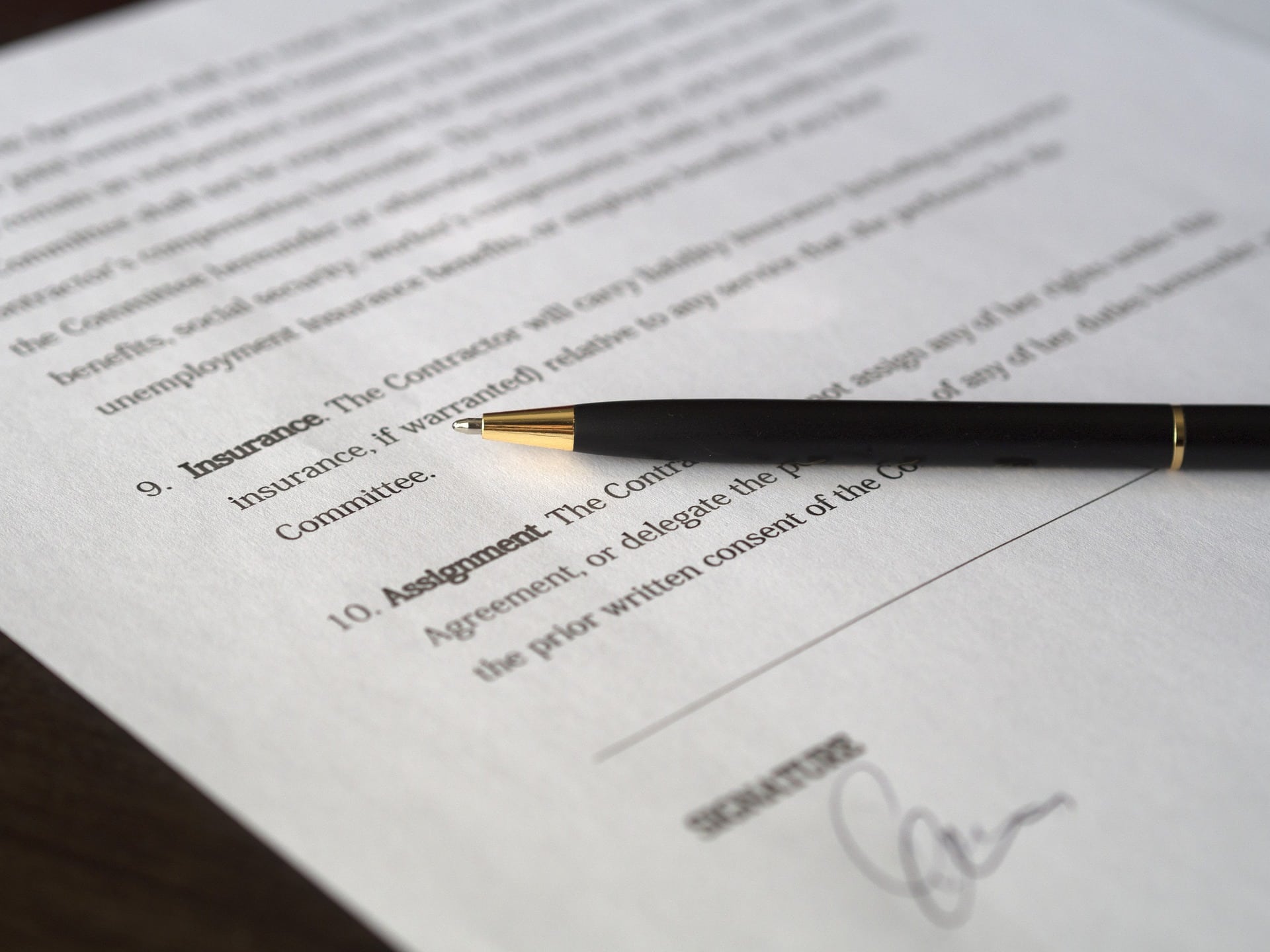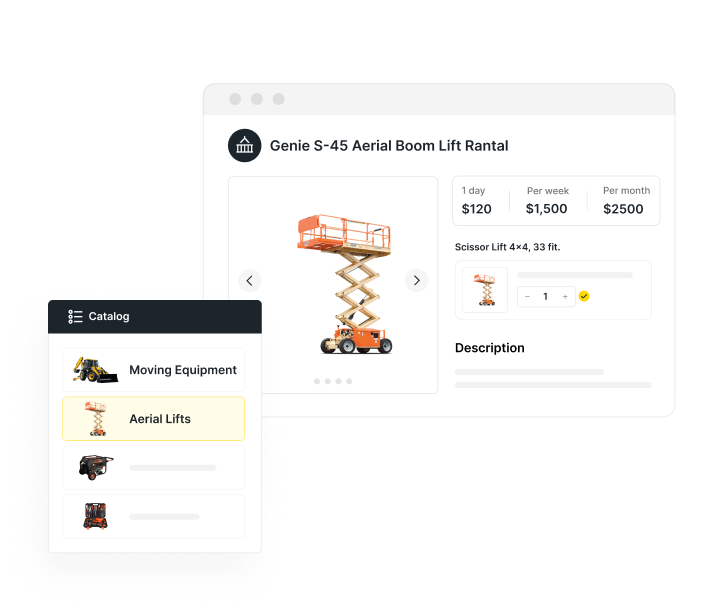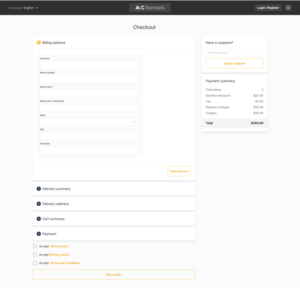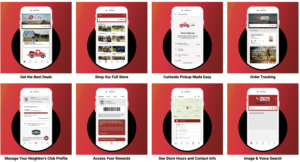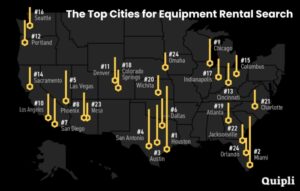When you rent out equipment to customers, you’ll need an equipment rental Terms & Conditions agreement for them to sign.
A Terms & Conditions agreement constitutes a legally binding contract, so it’s important that you make sure that it includes the right information, in the right language. If it’s not written and worded correctly, you could end up having to go through formal litigation in the event of a dispute with a customer.
Here’s what you’ll need to include in a Terms & Conditions agreement for equipment rentals – the types of clauses involved, what they mean, and how they help protect your rental business and your equipment
Since Terms & Conditions agreements are important legal documents that need to be written in the right kind of legalese, we recommend consulting with a contract lawyer to have yours created.
What to Include in The Terms & Conditions for Your Equipment Rentals
The terms and conditions agreement for an equipment rental contract should include certain kinds of clauses, so that you can cover all of your bases and make sure that everything is clearly outlined and delineated in the document.
The clauses and information that you need to include here will help protect your business and property in case your equipment is damaged or lost, if a customer defaults on payments, or if things otherwise go wrong.
You’ll definitely make sure that you include the following information in your Terms & Conditions agreements:
- Indemnification clause
- Rental period
- Stipulations for the use of the equipment
- Loss or damage clause
- Transportation stipulations
- Information about your insurance coverage and warranties for the equipment
- Event of default clause
Here’s some more information about each necessary section.
What to Include in Your Terms & Conditions Agreement for Equipment Rentals
The terms and conditions agreement for an equipment rental contract should include certain kinds of clauses, so that you can cover all of your bases and make sure that everything is clearly outlined and delineated in the document.
The clauses and information that you need to include here will help protect your business and property in case your equipment is damaged or lost, if a customer defaults on payments, or if things otherwise go wrong.
You’ll definitely make sure that you include the following information in your Terms & Conditions agreements:
- Indemnification clause
- Rental period
- Stipulations for the use of the equipment
- Loss or damage clause
- Transportation stipulations
- Information about your insurance coverage and warranties for the equipment
- Event of default clause
Here’s some more information about each necessary section.
Indemnification Clause
In commercial contact agreements, an indemnity clause helps determine where the risk involved in the agreement is allocated between the two parties involved.
The term “indemnification,” also referred to as “indemnity,” refers to when one party involved in a contract compensates the other party for costs and expenses.
In the case of a rental equipment terms and conditions agreement, this covers what’s known as “direct claims.” That just means that the claim is made by one of the two parties against the other. For example, if a customer damages your equipment by using it in an irresponsible way that’s forbidden by the contract, they’d have to compensate you for the associated costs.
Here’s a quick overview of the typical components of an indemnification clause that would apply for an equipment rental Terms & Conditions agreement. If you want a more in-depth explanation, we highly recommend checking out this comprehensive breakdown from Thompson-Reuters, a world-renowned data firm that works closely with law firms, corporate legal departments, and governmental regulators.
- Obligation to indemnify. This requires the customer to reimburse you for specified costs and expenses.
- “Hold harmless” provisions. The language used in indemnification clauses in typical contracts, like your own T&C agreement, requires the indemnifying customer – which, in this case, is the customer who’s renting from you – to “identify and hold harmless” the “indemified party” (which is you).
- Recoverable damages. This defines what kinds of damages are covered by the indemnification clause – the cases where the renter needs to pay you back.
Rental Period
This section just specifies how long the renter has agreed to rent the equipment from you, and when they need to return it.
Use of Equipment
This section outlines how the renter is allowed to use your equipment. It’s meant to prevent them from using it in irresponsible or inappropriate ways that could lead to damage or losses.
Loss or Damage Clause
This clause specifies what happens if the customer loses or damages your equipment during the rental period. It says that the customer is agreeing to assume this risk and responsibility.
Transportation Information
This specifies how and when the equipment is permitted to be transported.
Insurance and Warranty Information
This section provides some information about what kinds of damage your insurance, and any applicable warranties on your equipment, will cover.
Event of Default Clause
An event of a default clause is a must-have in a commercial contract like a T&C agreement. It specifies what happens when one party fails to uphold their end of the agreed-upon deal.
In this case, it allows you to terminate the agreement, declaring all outstanding amounts owed immediately due and payable, in the event of a breach of contract on the renter’s part.
Simplify Your Rental Business Management with Quipli
Quipli makes it easy to manage multiple aspects of your business from one convenient, user-friendly software platform. It’s a great solution for handling inventory management, your online storefront, and more.
Explore additional helpful resources like our equipment purchase agreement template or our equipment rental form excel template.
Hit the button below to book your demo today and find out more about what Quipli can do for you!


